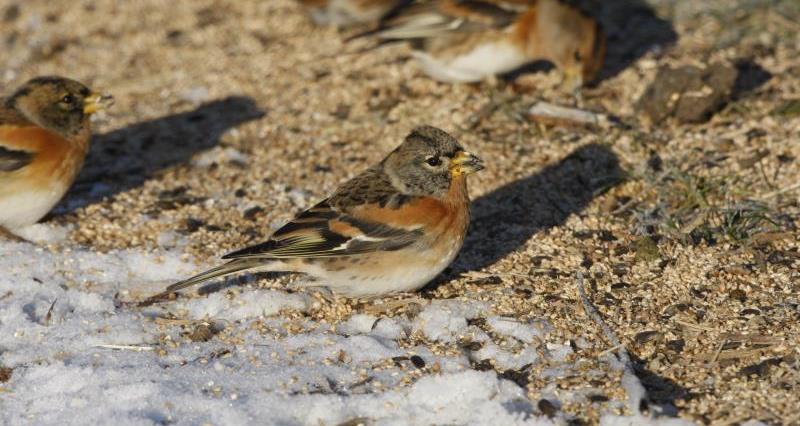What
Spreading seed or grain regularly during winter and early spring can provide an essential source of food for seed-eating farmland birds. This helps to support them through the "hungry gap" when natural food is less available on farm and in the wider countryside.
Why
Bird species found on farmland, such as yellowhammers and tree sparrows, need seed food throughout the year to survive.
Through supplementary winter feeding farmers can support populations of declining farmland birds when the natural sources of seeds and grains are no longer available.
This can be particularly important where over-winter stubbles cannot be left uncultivated and other seed-rich options such as wild bird seed mixes cannot be established.
How
Choose the right location
- Choose a feeding site that is easy to reach so you can visit regularly within your normal farm rounds. Consider if the site will still be easily accessible during winter weather.
- Consider spreading seed in non-cropped areas, on firm dry surfaces such as farm tracks, or areas of short grassland to prevent introducing weeds.
- Free-draining surfaces will prevent the seed from rotting or germinating.
- Rotating the feeding area around a field or moving along a track will help to reduce the risks of birds spreading disease to each other, or of rodents using a site.
- Try to spread supplementary feed near existing food sources such as wild bird mix or overwintered stubbles if possible.
Choose the right feed mix
- A wide range of seed can be used, including cereals, grains such as millet, oilseeds, tailings (the small seeds removed from harvested crops) and other seeds.
- NB - tailing cannot be used with option AB12.
- Many seed merchants offer special supplementary feeding mixes, so shop around for the best mix.
Feed regularly between December and April
- Supplementary feeding should start before the sown winter bird food runs out. This keeps farmland birds using the areas and prevents a dip in their winter condition.
- Feed should be well spread out on the areas chosen, rather than left in piles.
- Try to leave no longer than a week between feeding. If you find that there is still food leftover from the last feed, consider reducing the amount used slightly rather than increasing the time between feeds.
- The amount of seed needed for feeding will vary throughout winter, but will likely be between 10 and 25kg per week, with half a tonne sufficient for the winter.
- Seed can be provided in hoppers or by spreading on the ground (though if you are feeding as part of an AB12 option only 10% can be fed from hoppers).
